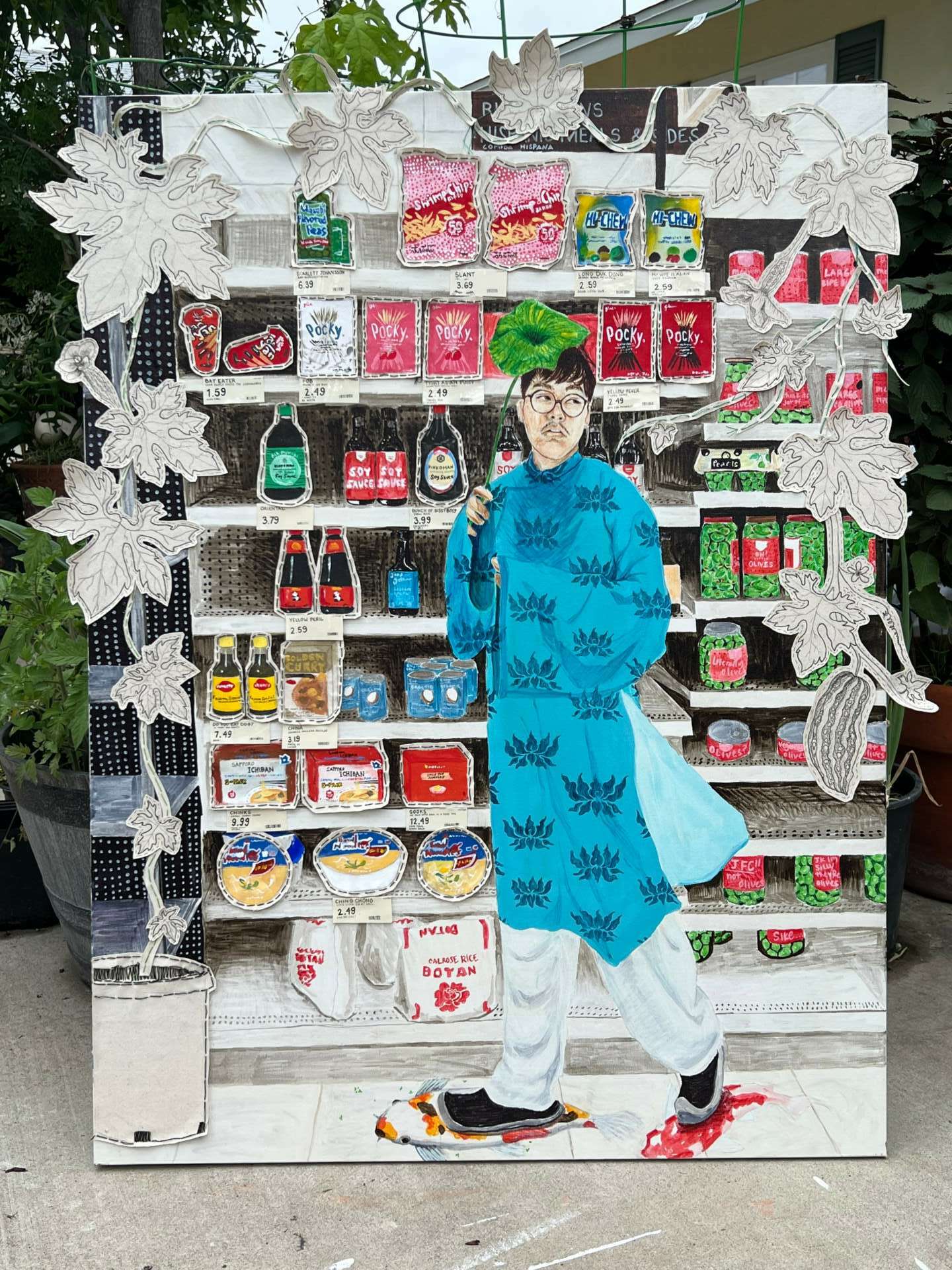We were lucky to catch up with Michael Tran recently and have shared our conversation below.
Alright, Michael thanks for taking the time to share your stories and insights with us today. Let’s start big picture – what are some of biggest trends you are seeing in your industry?
Some of the biggest trends in the new generation of contemporary artist is an explosion of experimentation and straying from traditional painting into a more interdisciplinary approach. I’ve been seeing a lot of printmaking on stretched canvas, 3D elements on canvas, decorating the edges with found objects, and so much more. I think it’s so fun and allows artists to finally get that individuality we all strive for. There is an artist in my cohort, Estefanía, who was one of the first people to use the 3D element to her artwork in such a subtle and intentional way. Her piece, ‘The Red Truck,’ uses foam board, battery powered lights, and acrylic along with an understanding of perspective to build off the canvas and create the illusion of the back of a truck with the lights illuminating. Not only does it become sculptural, but it also forces the audience to interact with the scene of her artwork. A lot of Estefanía’s work becomes a mixture of 2D and 3D, which is not taught to us in undergrad, but helps artists get noticed more for the innovative techniques. I’m really lucky I get to talk to her all the time and to personally learn from her so that I may explore and apply my own techniques for my body of work!


Great, appreciate you sharing that with us. Before we ask you to share more of your insights, can you take a moment to introduce yourself and how you got to where you are today to our readers.
I’m a interdisciplinary artist from LA/OC. Currently, My recent body of work explores how the displaced Vietnamese population through community has created a home in Little Saigon, California. I achieves this by referencing local spaces such as the supermarket, temples, and swap meets, and how my community interacts with these spaces. My other body of work is about my Asexuality and the boundaries created from the fear of rejection. It plays on the idea of power, control, anger, and wishing. During my formative years in CSULB, I sought advice from professors and art history about whether there were any examples of Asexuality in art, and how it can be portrayed. I would get some advice here and there, but I found confidence and comfort in the character of a cowboy. The cowboy controls his story, and that was something I desperately needed. In a majority of my work, the cowboy is the character that the audience watches and feels for. The cowboy yearns, destroys, and secludes himself in an introspective world that acts like a barrier and isolation. The Asexual cowboy’s end goal is love. This series is forever ongoing as a reflection of my own experiences navigating asexuality in the queer community. I think what makes my art stand out is that I have no example of what my art should look like the the message I want to say. When I make art about asexuality, I feel like someone finally understands me, and that person is me.


Can you tell us about what’s worked well for you in terms of growing your clientele?
For current students and freshly post-undergraduate artists, my advice is to apply to as many opportunities as you can. There are so many residencies, open calls, zines, scholarships, and galleries waiting for fresh blood. The most effective strategy for growing clientele is to get the most exposure to your targeted audience as possible. The next thing is to go to opening/closing receptions of art shows and artist talks. Networking doesn’t have to be as hard and scary as it may seems. I find that strangers come up to talk to you about your art or the art at the show all the time. It’s really easy to find common ground amongst people who happen to be artists or have art as a big part of their livelihood. I’ve met really amazing new friends who guide me and let me know about opportunities, and I return the favor!


What’s the most rewarding aspect of being a creative in your experience?
The most rewarding aspect of being an artist is the people you meet along the way. It sounds so corny, but I really feel like I’ve met the coolest people and learn so much from them. I didn’t just find acquaintances, but I found some REAL friends who I can confide in, ask for critiques, and make work together. Networking and meeting new people definitely became one of the best things about being an artist. The people I’ve met so far have inspired me and pushed me to be better than I can. I have only love, gratitude, and flowers for them for every show they get into!


Contact Info:
- Instagram: @Koituses


